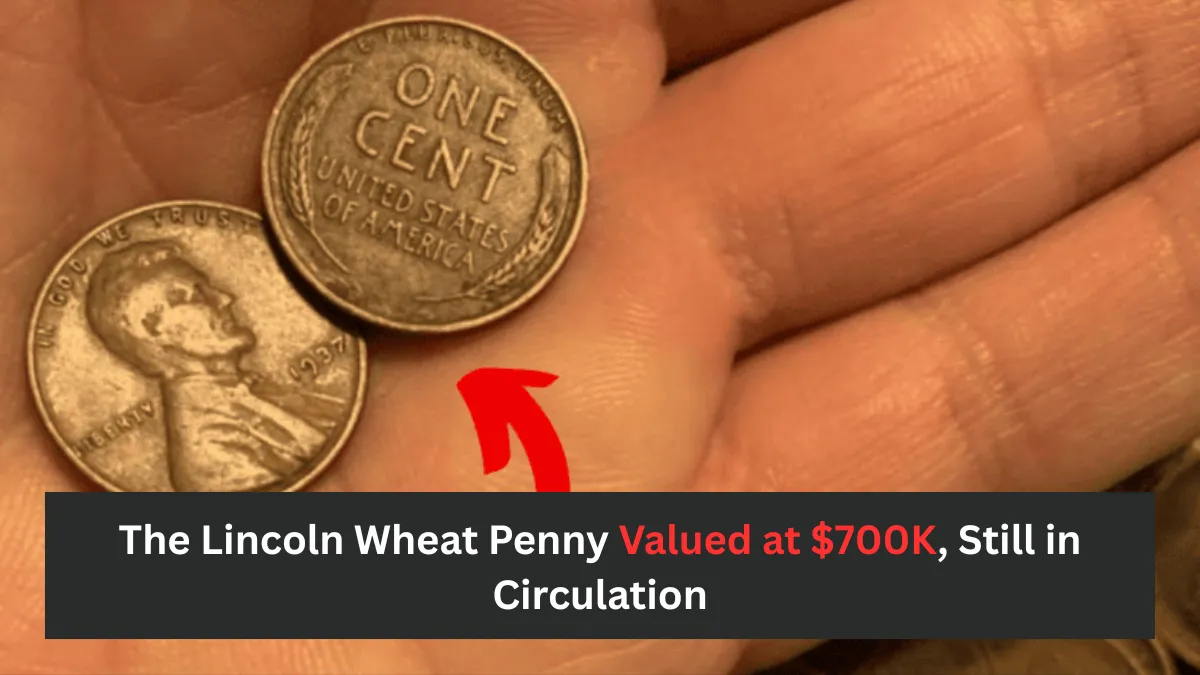The Lincoln Wheat Penny: A Coin That Changed History
Released in 1909 to honor the centennial of Abraham Lincoln’s birth, the Lincoln Wheat Penny marked a significant shift in American coin design. For the first time, a U.S. coin showcased a real historical figure—President Lincoln—on its obverse side, replacing the previously common symbolic representations such as Liberty.
Crafted by Victor David Brenner, the coin’s front features Lincoln’s profile, while the back displays two wheat ears surrounding the inscription “ONE CENT.” This design was used continuously until 1958, becoming a beloved classic among coin collectors. Though billions were minted, select versions have become extremely rare and valuable, with some pieces commanding prices as high as $700,000 today.
Why Some Lincoln Wheat Pennies Are Worth a Fortune
While the majority of Lincoln Wheat Pennies hold only nominal value, a few rare examples have seen their worth soar dramatically. Factors like limited mintages, errors during production, and historical significance contribute to their elevated status.
Notable among these are the 1909-S VDB and the 1943 copper penny, both known for their scarcity and unique features. The 1943 copper penny stands out as an error coin produced when the Mint intended to use steel instead of copper during World War II. These rare coins are coveted by collectors, and depending on their condition and authenticity, they can fetch hundreds of thousands of dollars at auction.
The 1943 Copper Penny – The Crown Jewel
The 1943 copper penny is often considered the pinnacle of rare modern American coins. During World War II, the U.S. Mint switched to zinc-coated steel pennies to conserve copper for the war effort. However, a small number of copper blanks from 1942 were mistakenly struck in 1943, creating a handful of these unintended coins.
Because they were never supposed to exist, the 1943 copper pennies are considered extraordinary minting errors. Authentic examples can be worth anywhere between $250,000 and more than $700,000, depending on their grade and condition, making them extremely valuable and sought after by numismatists worldwide.
Still in Circulation? You Might Be Lucky
Although highly improbable, some of these rare Lincoln Wheat Pennies could still be circulating in everyday transactions. With millions of coins passing hands daily, many people do not closely examine their change.
It’s possible that one of these valuable pennies could be tucked away in a drawer, a coin jar, or even at a local cash register, unnoticed. While most of the known rare specimens have been accounted for, there is always a chance that a few remain undiscovered, waiting for a keen observer to identify them.
What to Look for in Your Pocket Change
If you want to try your luck at spotting a valuable Lincoln Wheat Penny, here are some tips to help you identify them:
- 1943 Copper Penny: Test with a magnet—if the coin sticks, it’s made of steel; if it doesn’t, it could be the rare copper version.
- 1909-S VDB: Check for the small “VDB” initials located at the bottom center of the reverse side and an “S” mintmark just beneath the date.
- 1955 Double Die: Look for a doubled image of the date and lettering, which can be noticed even without magnification.
- Condition: Coins graded MS65 or higher (mint or near-mint condition) have significantly higher value.
Conclusion
Though modest in size, the Lincoln Wheat Penny carries immense historical and collectible significance. From its pioneering design debut to rare anomalies like the 1943 copper penny, it remains a fascinating subject for both collectors and casual observers.
With some of these coins reaching values as high as $700,000, it’s worthwhile to pay attention to the pennies you encounter daily. The next time you’re sorting through your loose change, take a moment to examine each coin carefully—your next great discovery might be just a penny away.
FAQs
1. What makes the 1943 copper penny so rare?
It was a minting error. The U.S. Mint used steel in 1943, but a few leftover copper blanks were mistakenly used. Only about 20 are known to exist.
2. How can I tell if I have a valuable Wheat Penny?
Check the year, mint mark, and material. Rare dates like 1909-S VDB and 1943 copper are most valuable. Use a magnet or check with a coin grading expert for certainty.
3. Can I find valuable Wheat Pennies in circulation today?
While it’s rare, it is still possible. Some valuable Wheat Pennies might still be in coin jars, collections, or pocket change that hasn’t been examined closely.
4. Should I clean my old pennies before selling them?
No. Cleaning a coin can reduce its value significantly. Collectors prefer coins in their original, unaltered state.
John M. Moody is a passionate writer known for his insightful and engaging storytelling. With a background in astrology and a love for exploring the human experience, John weaves cosmic wisdom into compelling narratives that inspire and enlighten. His work spans articles, essays, and spiritual guides, often blending mystical themes with real-life reflections. When he's not writing, John enjoys stargazing, reading mythology, and connecting with nature for creative inspiration.
